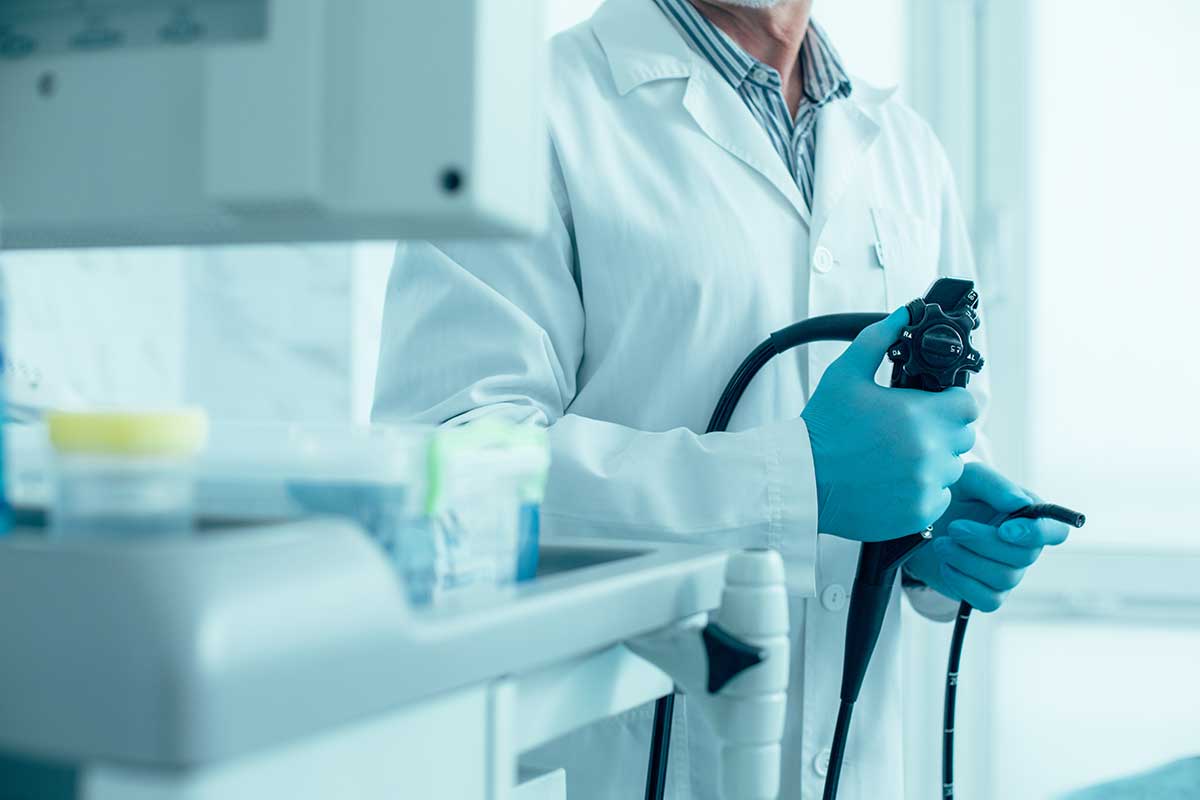
Bronchoscopy
Watch our video about Bronchoscopy
Bronchoscopy is a minimally invasive medical procedure used to examine the airways, lungs, and bronchial tubes. The procedure involves the insertion of a thin, flexible or rigid tube (bronchoscope) equipped with a camera through the nose or mouth and into the lungs.
This test allows specialists to diagnose and treat lung conditions, collect tissue samples, remove blockages, or even perform therapeutic procedures. It is widely used in pulmonology and respiratory medicine to identify abnormalities that are not always detectable with imaging exams like X-rays or CT scans.
What is Bronchoscopy Used For?
Bronchoscopy is used to:
- Examine the lungs and airways for infections, inflammation, or tumors.
- Diagnose and monitor lung diseases such as tuberculosis or lung cancer.
- Identify the cause of persistent coughing, shortness of breath, or abnormal imaging results.
- Collect tissue (Biopsy) or mucus samples for laboratory analysis.
- Remove foreign bodies, mucus plugs, or blood clots from the airways.
- Administer localized treatments, such as medication delivery or laser therapy.
- Assess and treat airway obstructions or lung collapse (atelectasis).
This procedure is essential for detecting lung diseases at early stages and providing targeted treatments.
How Does Bronchoscopy Work?
The bronchoscopy procedure follows these steps:
- Preparation: The patient may receive a sedative or local anesthesia to minimize discomfort.
- Insertion of the Bronchoscope: A thin, flexible or rigid bronchoscope is guided through the nose or mouth into the lungs.
- Examination and Sample Collection: The doctor visualizes the airways in real-time and may take tissue or fluid samples for testing.
- Treatment Procedures (if necessary): Certain therapeutic interventions can be performed, such as removing obstructions or applying medications.
- Completion and Recovery: The procedure lasts between 30 minutes and an hour, and the patient is monitored until anesthesia effects wear off.
Bronchoscopy is generally well-tolerated, and most patients resume normal activities within 24 hours.
Types of Bronchoscopy
There are two main types of bronchoscopy, each with distinct applications.
1. Flexible Bronchoscopy
This is the most common type of bronchoscopy, performed using a thin, flexible tube.
It allows real-time visualization of the lungs, biopsy collection, and secretion removal, making it suitable for diagnosing respiratory diseases and minimally invasive interventions.
2. Rigid Bronchoscopy
This procedure uses a stiff metal tube and is usually performed under general anesthesia.
It is used for removing large obstructions, tumors, or foreign objects from the airways, as well as performing advanced therapeutic procedures like stent placement.
What Conditions Can Bronchoscopy Detect?
Bronchoscopy helps diagnose a variety of lung and airway diseases, including:
- Lung Cancer – Detects tumors and allows biopsy for precise diagnosis.
- Chronic Obstructive Pulmonary Disease (COPD) – Identifies airway damage and inflammation.
- Tuberculosis (TB) – Confirms infection and evaluates lung damage.
- Pneumonia and Lung Infections – Detects bacterial, viral, or fungal infections.
- Pulmonary Fibrosis – Assesses lung scarring and chronic respiratory conditions.
- Bronchiectasis – Identifies chronic airway widening and mucus buildup.
- Foreign Body Aspiration – Locates and removes inhaled objects blocking the airways.
When is Bronchoscopy Recommended?
Bronchoscopy is recommended in the following situations:
- Persistent Coughing or Blood in Sputum – Helps rule out infections or lung diseases.
- Abnormal Chest X-Rays or CT Scans – When imaging results show suspicious lung lesions.
- Breathing Difficulties (Shortness of Breath) – To investigate potential airway blockages.
- Suspected Lung Cancer – For biopsy and tumor evaluation.
- Chronic Respiratory Infections – To identify resistant bacteria or fungi.
- Airway Obstruction Symptoms – To locate and remove foreign objects or blockages.
- Monitoring Lung Disease Progression – Especially in chronic conditions like COPD or fibrosis.
Pre and Post-Bronchoscopy Care
Before the Procedure:
- Avoid eating or drinking for at least 6-8 hours before the exam.
- Inform your doctor about any medications, especially blood thinners.
- Stop smoking at least 24 hours before the procedure to improve lung function.
- Arrange for transportation home, as sedatives may cause drowsiness.
After the Procedure:
- Refrain from eating or drinking until numbness from anesthesia wears off.
- Expect a mild sore throat, hoarseness, or coughing for a few hours.
- Monitor for signs of complications, such as severe bleeding or breathing difficulties.
- Follow up with your doctor to discuss results and next steps.
Contraindications for Bronchoscopy
Although generally safe, bronchoscopy may not be recommended in cases of:
- Severe heart or respiratory conditions, which could pose risks during sedation.
- Uncontrolled bleeding disorders, increasing the risk of complications.
- Severe airway narrowing (tracheal stenosis), making the procedure difficult.
- Recent respiratory infections, which may interfere with the examination.
If a patient has any of these conditions, alternative diagnostic methods may be considered.
Alternatives for Patients Who Cannot Undergo Bronchoscopy
For individuals unable to undergo bronchoscopy, alternative diagnostic options include:
- Chest CT Scan – Provides high-resolution lung imaging.
- Sputum Culture and Microscopy – Analyzes mucus for infections or abnormal cells.
- Pulmonary Function Tests (PFTs) – Measures lung capacity and airflow.
- PET Scan – Helps detect cancerous lung abnormalities.
- Blood Tests for Infections and Autoimmune Disorders – May help rule out certain conditions.
Schedule Your Bronchoscopy at Clinic Consultation
Bronchoscopy services are available at Clinic Consultation, performed by highly trained pulmonologists using the latest medical technology. Whether you need a lung evaluation, biopsy, or airway treatment, our team provides comprehensive and personalized respiratory care.
📅 Book your bronchoscopy appointment today and take proactive steps toward better lung health!
Click here to schedule an appointment online